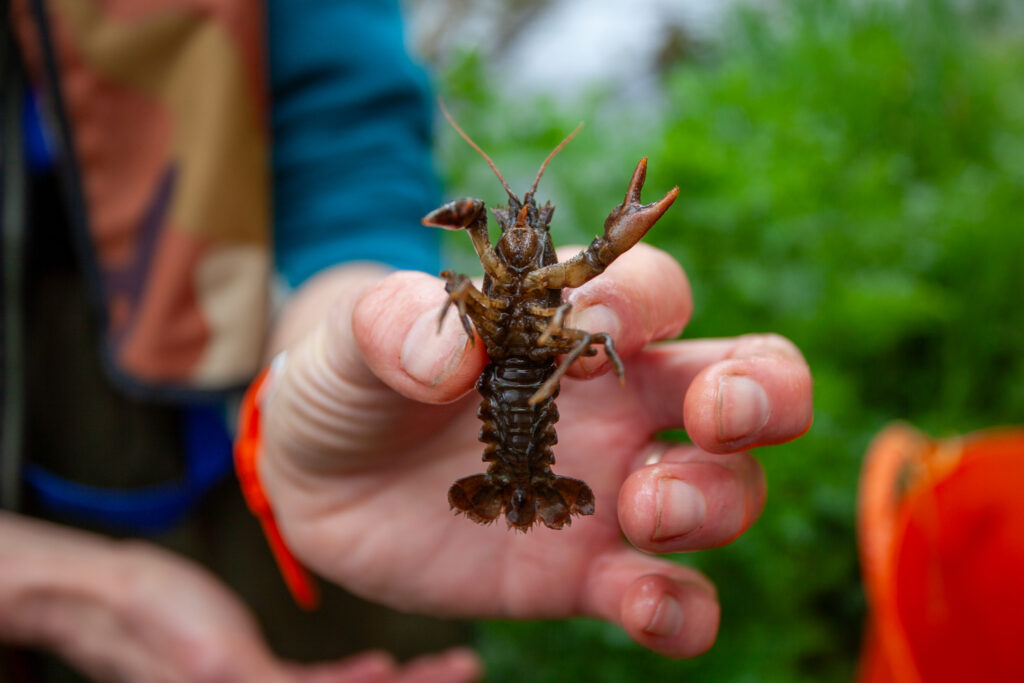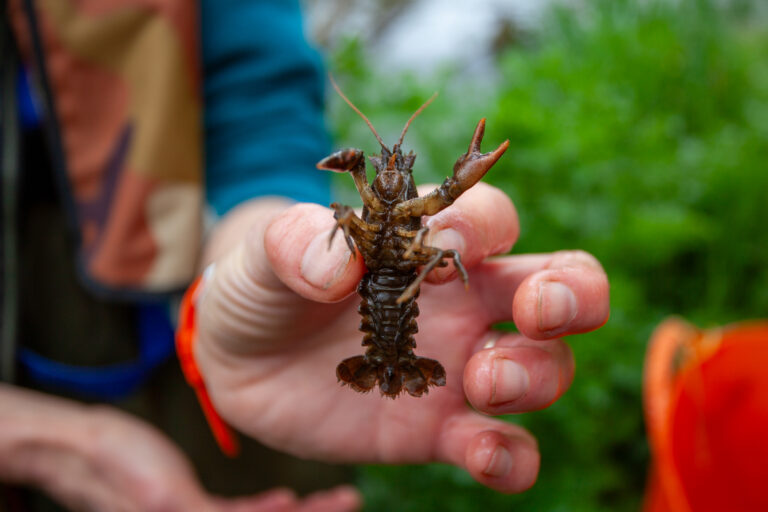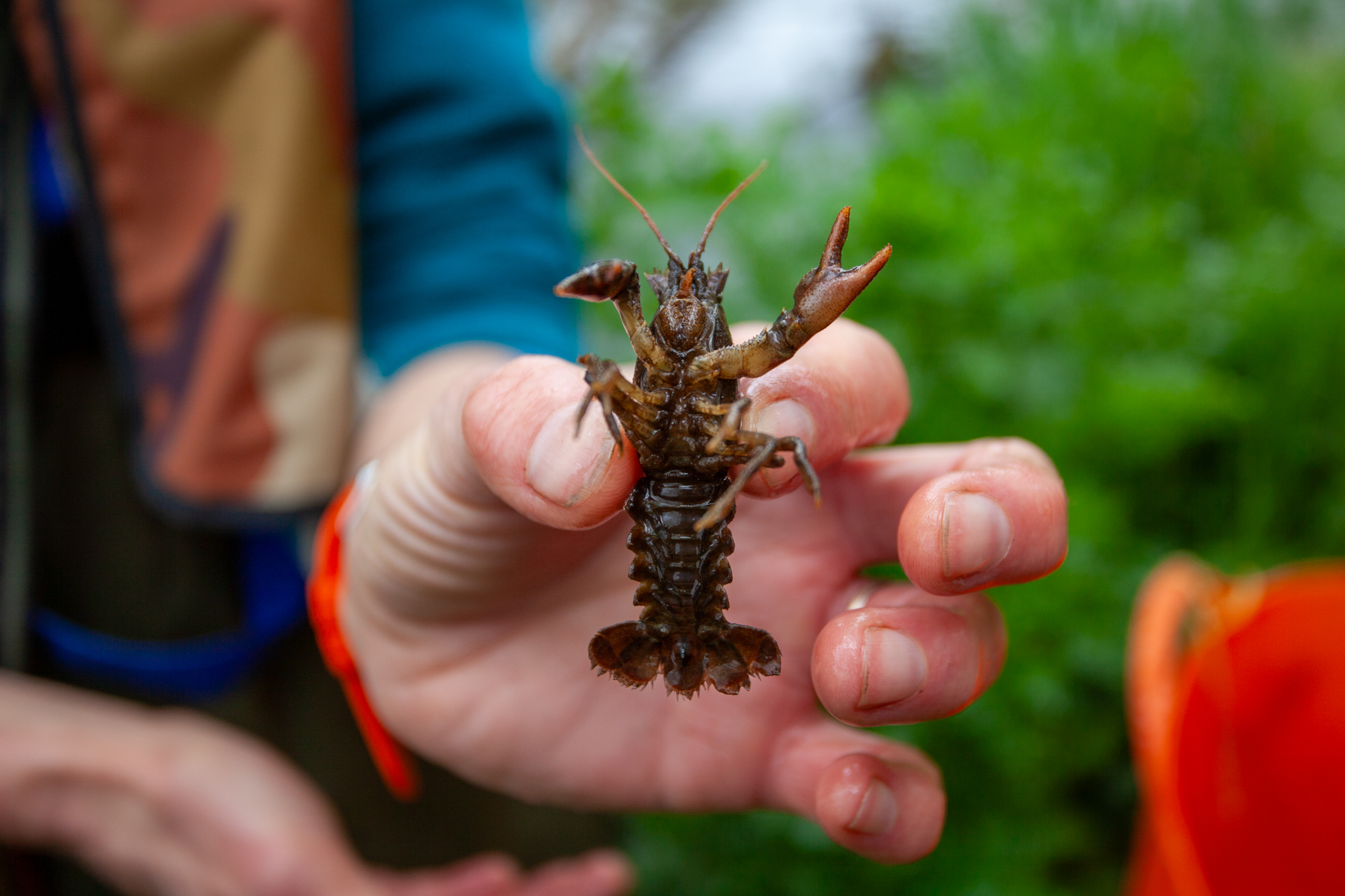Crustaceans are invertebrates which have a very obvious hard, segmented external skeleton (known as an exoskeleton) providing support and protection. This group includes crabs, lobsters, shrimps, crayfish, barnacles and woodlice (the UK has 37 species of woodlice). They are mainly aquatic, but some (such as woodlice) live on land.
Their diet ranges from dead organic matter to eating other invertebrates or small fish. They are vital to food chains, both as predators and prey, and they play a key role in helping to break down dead organic matter.
Myriapods are also invertebrates. This group includes millipedes and centipedes which have long segmented bodies with each segment having one or two pairs of legs. They live on land and feed on decaying plant material.
Five species are listed as Devon Species of Conservation Concern. Of these four are Focus Species as they need extra attention. These are discussed below. The false flat-backed millipede lives in south Devon and isn’t known anywhere else in the world.



